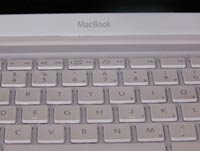
We all use email but, sometimes we use it too much or use it inappropriately. To get the most out of email we need to use it carefully and judiciously. These are 10 tips to get the most out of emailing.
1. Use different email accounts for different purposes.
It is is good to have separate email accounts for separate purposes. For example, you may have one for business and one for social activities. This means you can check the personal email in the evening without having to think / worry about business. If you see an important message from your boss it could ruin your weekend or evening. At the end of the day you want to be able to get away from work. Don’t allow email to make you a slave to work. Some people feel it is inconvenient to check 2 different email accounts. But the relative inconvenience is easily outweighed by the benefits.
2. Email is not always the best Form of contact.
If you have a really important issue or you are upset with someone, emailing is often not the best answer. If necessary speak to the person directly, rather than through an email.
3. Don’t say anything you wouldn’t say in person.
This advice has certainly been given before. But, it is always worth reminding ourselves about the importance of being polite and avoiding unnecessary rudeness. We will regret it later. Email makes it easier to use harsh words because it is impersonal. We need to be very careful.
4. Use a Good Title
Many people ignore the title of an email. If the subject changes don’t keep using an old “re:irrelevant title” A good title increases the chance that people will actually read your email, rather than just leaving it for later. A bad title may even get deleted as spam.
5. Don’t Ignore Basics of English.
Just because it is an email, doesn’t mean we have to write like a 5 year old or use text message language. This indicates laziness and a lack of care. If you haven’t time to respond properly, wait until you do. Keep emails brief, but don’t completely ignore the basic use of grammar and spelling.
6. Keep it Short
Emails can be brief and to the point. If the message has to be long, make sure it is broken up in to different sections, which are easy to read. But, generally you should aim to keep it less that 5 sentences. This is good for both the writer and the reader.
7. Acknowledge Important Emails.
If somebody sends some important documents, files or message, make sure you, at least, acknowledge their receipt. Otherwise they may be uncertain that they got them. It doesn’t have to be long; it can be quite short.
8. Create a Standard Responses
If you find yourself sending similar answers to many people, compose a draft message and save it in your drafts folder (or write it in word). You can use this standard response for emailing many people. Don’t forget to personalise it by adding their name.
9. Be careful about Replying To All.
If you are new to email make sure you know the difference between replying to one person and replying to everyone on the initial message. Suffice to say you will send many emails which you would not want to be seen by everyone. It can be extremely embarrassing to send a personal message for everyone to see - it does happen. If you have new workers, make sure they are aware of this distinction. It will save a lot of potential problems.
10. Compose Your Signature.
Having a signature looks professional and saves typing the same information every email. Remember people may wish to contact you through over methods than email. So make sure you have a phone number and address. If relevant add any qualifications and websites that you have. This gives people a chance to find out more about you.









No comments:
Post a Comment